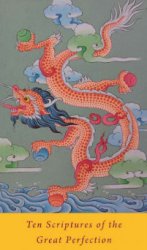The Bodhicitta Sutra: Ten Scriptures of the Great Perfection
- Добавил: Energy555
- Дата: 24-06-2020, 19:28
- Комментариев: 0
 Название: The Bodhicitta Sutra: Ten Scriptures of the Great Perfection
Название: The Bodhicitta Sutra: Ten Scriptures of the Great PerfectionАвтор: Gautama Buddha
Издательство: CreateSpace Independent Publishing Platform
Жанр: буддизм
Год издания: 2018
Страниц: 301
Язык: Английский
Формат: EPUB, PDF, DOC
Размер: 233 Мб
The Great Perfection, also known as the Atiyoga or Dzogchen (rDzogs chen ), is a tradition of esoteric Buddhism that espouses instantaneous enlightenment. This tradition arrived in Tibet in the Eighth Century of the Common Era and has been maintained up until the present. The literature of the Great Perfection has been divided into three groups or sections: The Mind Section (Sems sde ), the Space Section (kLong sde ), and the Upadesha Instruction Section (Man ngag sde ). The Bodhicitta Sutra is a source work of the Mind Section, and is here translated in full for the first time.
The Bodhicitta Sutra is famed in Tibetan literature as the “Do Chu ” (mDo bcu ), which means The Ten Sutras. The first of the Ten Sutras is the Bodhicitta Sutra, and the next nine sutras are commentaries on it. There is an eleventh Sutra, which is a discussion of the commentarial tradition active in this work. The complete collection of eleven Sutras is therefore also called both “The Bodhicitta Sutra,” and “The Ten Sutras.”
The description in the Eleventh Sutra of writing and punctuation conventions that hold only with the Tibetan language assures us that the text was first written in Tibetan, and is not a translation from some Indic language. In the year 1092 Pho brang gZhi ba ‘od published a list of books that he believed to be inauthentic. (See Samten Karmay’s article: An Open Letter by Pho-brang Zhi-ba-‘od” in The Tibet Journal, Vol. 3, 1980.) The Bodhicitta Sutra, under the name of “The Ten Sutras,” is included in this list. We can be sure, therefore, that the Bodhicitta Sutra was well known by the end of the Eleventh century. Vocabulary choices in the text of the Sutra, especially the use of the archaic Ton med and brTsen mer for sudden and gradual enlightenment, help to place this work in the early period. It is not impossible that this work is as old as the Eighth Century, but it is more likely that it is from the Ninth or Tenth.
It is a great pleasure to present to you a translation of this ancient work of literature into English, with the hope that the timeless message of the Atiyoga will live on and be better understood throughout the world. For your convenience and for the preservation of this ancient literature, I have included images of the Tibetan text. Those who wish to request transmissions or teachings on this literature from those who hold the lineage will also find this helpful.
Внимание
Уважаемый посетитель, Вы зашли на сайт как незарегистрированный пользователь.
Мы рекомендуем Вам зарегистрироваться либо войти на сайт под своим именем.
Уважаемый посетитель, Вы зашли на сайт как незарегистрированный пользователь.
Мы рекомендуем Вам зарегистрироваться либо войти на сайт под своим именем.
Информация
Посетители, находящиеся в группе Гости, не могут оставлять комментарии к данной публикации.
Посетители, находящиеся в группе Гости, не могут оставлять комментарии к данной публикации.
